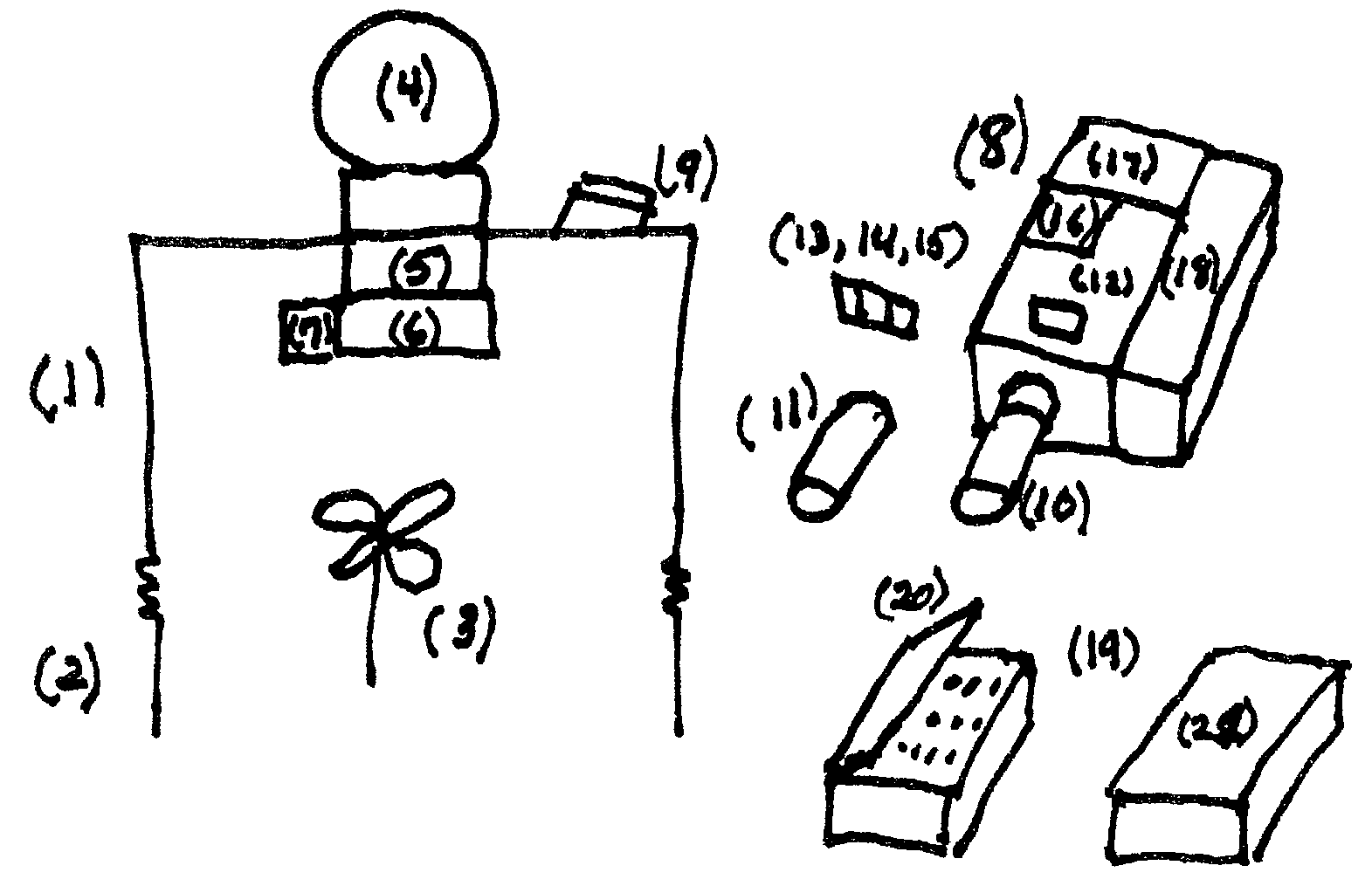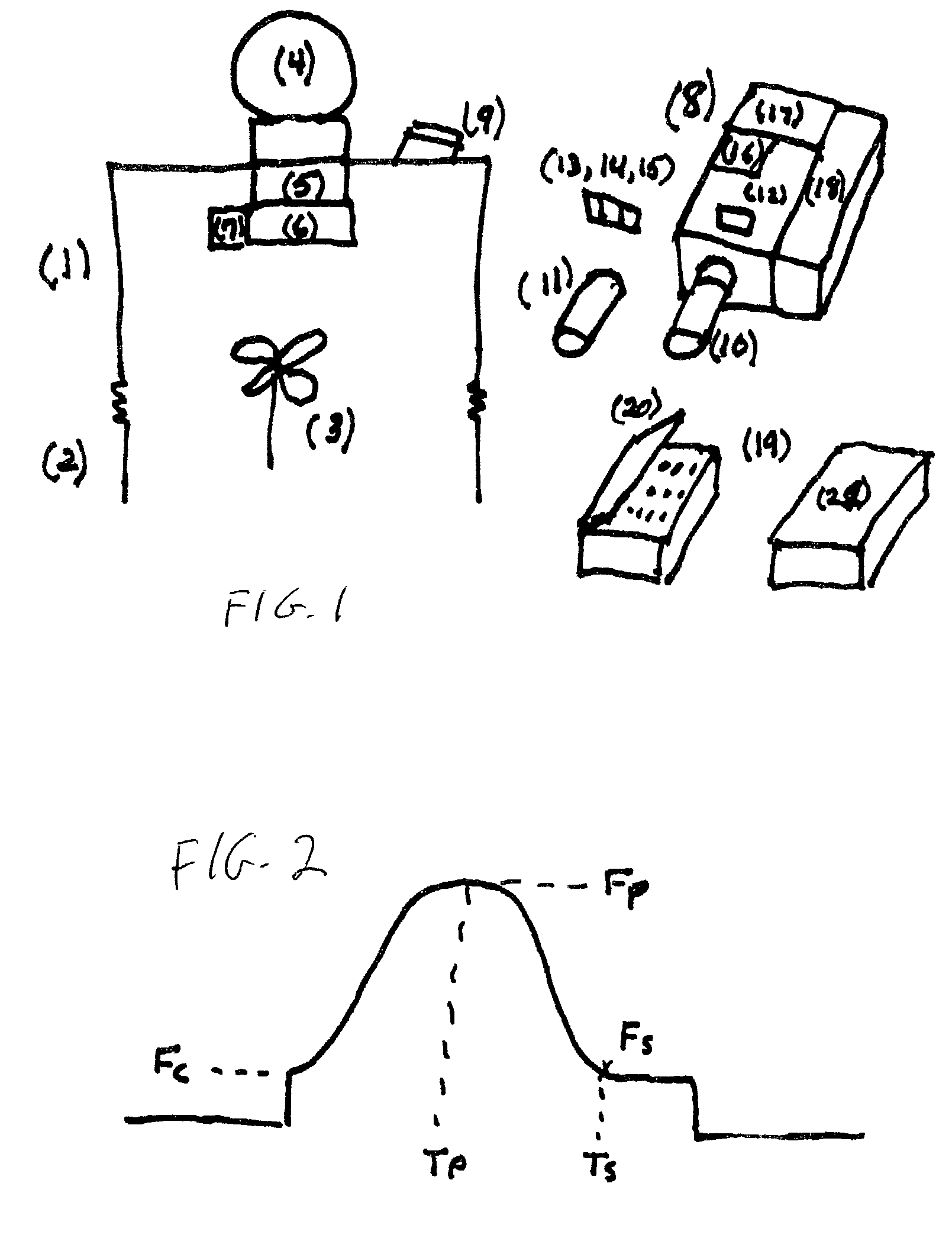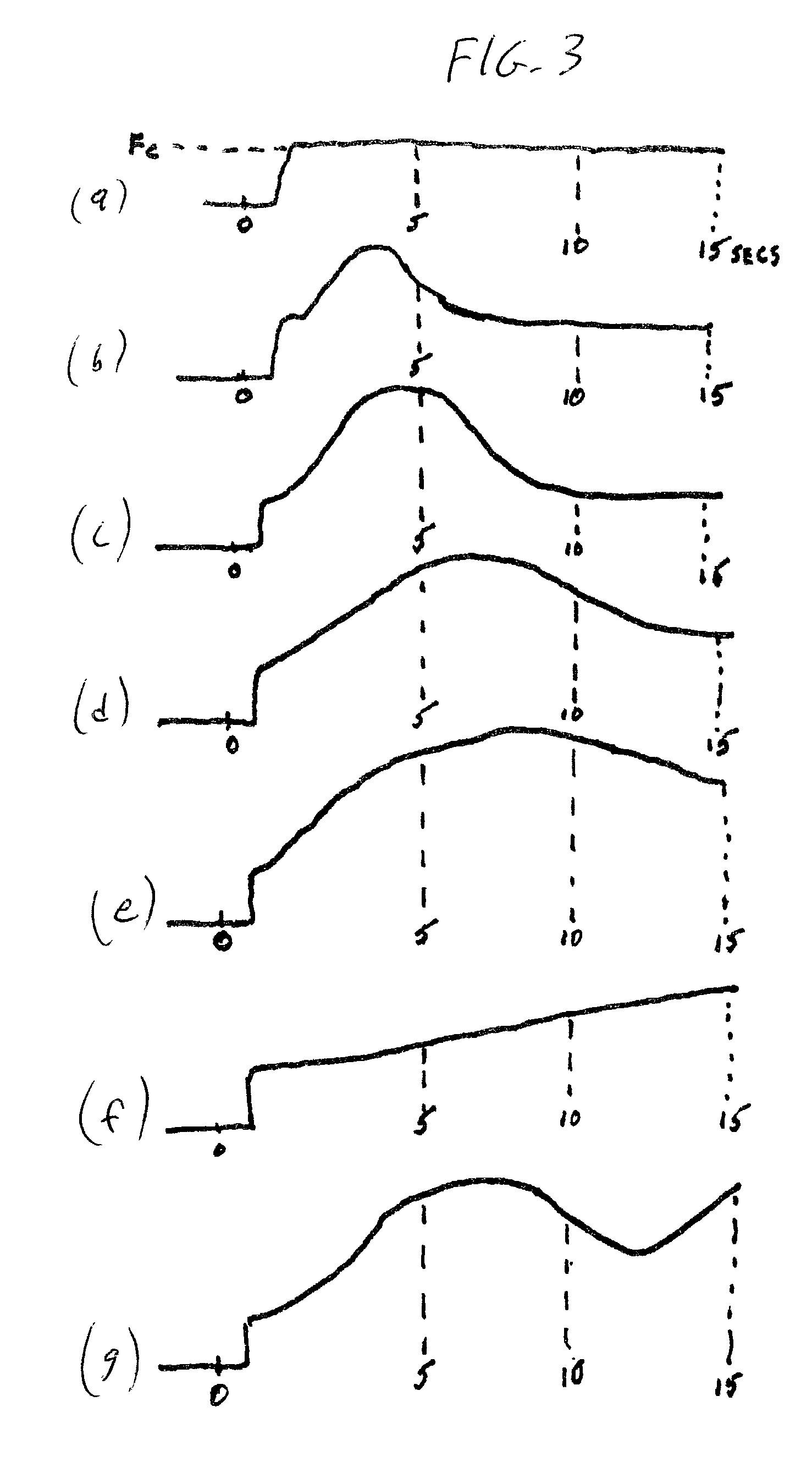Bio-imaging and information system for scanning, detecting, diagnosing and optimizing plant health
a bio-imaging and information system technology, applied in the direction of luminescent dosimeters, optical radiation measurement, fluorescence/phosphorescence, etc., can solve the problems of plant death, affecting the efficiency of photosynthesis, reducing photosynthetic activity or efficiency, etc., and achieve the effect of accurately measuring the fluorescence intensity-time parameters of plant stress condition
- Summary
- Abstract
- Description
- Claims
- Application Information
AI Technical Summary
Benefits of technology
Problems solved by technology
Method used
Image
Examples
Embodiment Construction
[0042] As shown in FIG. 1, the CFIT System, a closed box (1), is inserted into closed-side extenders (2) to accommodate varying plant height and is placed over the test plant (3) so that the plant has no incident ambient light except for the active light source (4) from either a NUV mercury lamp or a mercury halogen lamp with continuous visible light or from an array of light emitting diodes with blue, and / or blue-green, yellow spectra. The active light source is irradiated on the low-pass-band filters (5) to limit the spectral pass-bands to NUV 230 to 400 or from VIS 400 to 650 nm or from 650 nm to 1100 mm depending on the operation required. The spectral light is obstructed by shutter (6) that is opened by the shutter actuator (7) under control of the computer information processor (19) with embedded control program software to illuminate and control the test program for the plant specimen. The plant's physiological response to any plant stress stimuli that is present or introduce...
PUM
 Login to View More
Login to View More Abstract
Description
Claims
Application Information
 Login to View More
Login to View More - R&D
- Intellectual Property
- Life Sciences
- Materials
- Tech Scout
- Unparalleled Data Quality
- Higher Quality Content
- 60% Fewer Hallucinations
Browse by: Latest US Patents, China's latest patents, Technical Efficacy Thesaurus, Application Domain, Technology Topic, Popular Technical Reports.
© 2025 PatSnap. All rights reserved.Legal|Privacy policy|Modern Slavery Act Transparency Statement|Sitemap|About US| Contact US: help@patsnap.com



